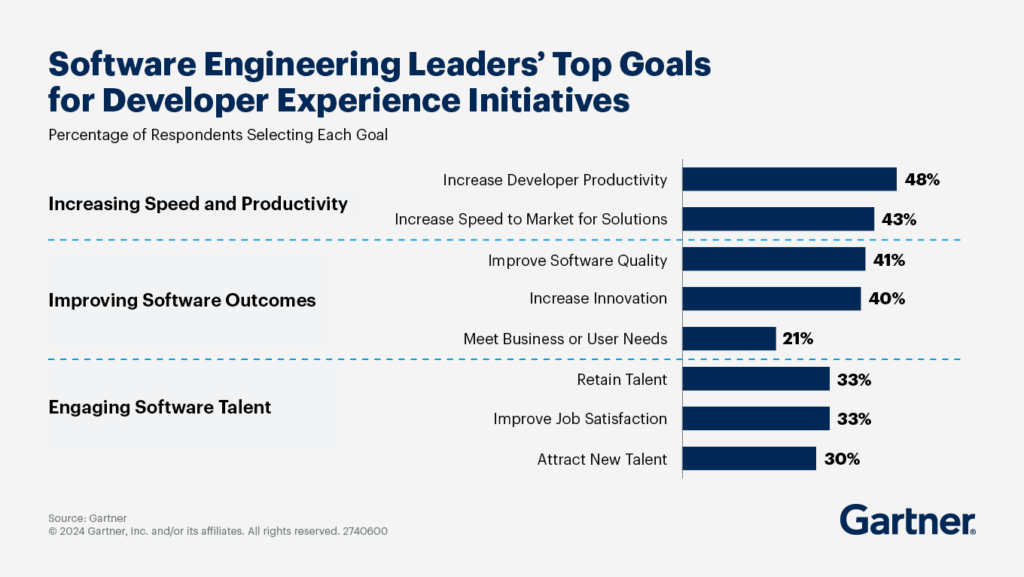In the boardrooms of Jakarta, Singapore, Tokyo, and Seoul, CIOs are no longer just asking, “How fast can we ship software?” They’re asking, “How sustainably can our developers innovate under mounting pressure—from regulators, customers, and competition?”
Across Asia, digital transformation has shifted from optional to existential. But the hidden bottleneck isn’t infrastructure or cloud spend—it’s developer productivity & experience (DevEx).
As regulatory landscapes tighten (think Singapore’s PDPA amendments, Japan’s revised APPI, and Thailand’s Personal Data Protection Act enforcement), and as AI-augmented development reshapes workflows, enterprises that treat DevEx as a cost centre are falling behind those that treat it as a strategic asset.
Defining DevEx
Toh Soon Seah, founder and CTO of Netgain, describes DevEx as "the operating system of an engineering organisation, especially a software-driven organisation."
He emphasises that it encompasses "the quality of the developer journey, from the first onboarding, the first laptop setup, to the production deployment and shipping out the first feature that brings benefits to the business."
Across Asia's fast-growing markets, where businesses thrive on technology-driven revenue, poor DevEx manifests as missed launches, major incidents, or auditing delays.
Conversely, a robust DevEx yields faster delivery, fewer incidents, and smoother audits.
Key trends
Key trends in Asia highlight DevEx's rising prominence. AI adoption has surged, with tools saving developers significant time. According to the Atlassian 2025 State of Developer Experience report, "AI adoption has reached a tipping point, with 68% of developers reporting 10+ hours of weekly time savings." This aligns with Southeast Asia's shift towards AI as a foundational pillar.

Liher Urbizu, president and managing director of SAP Southeast Asia, notes: "They have become fundamental pillars in enterprise software that drives business success. Our customers want agility, resilience, and innovation—all of which AI enables by automating routine tasks, accelerating decision-making, and powering new content and workflow models."
In the region, generative AI supports content creation, while agentic AI automates workflows, reducing manual efforts.
In the region, generative AI supports content creation, while agentic AI automates workflows, reducing manual efforts. Dr David Hardoon, global head of AI enablement at Standard Chartered, reinforces this by noting that "GenAI does not eliminate the need for engineering rigour — rather it amplifies the consequences of poor practices."
Another trend is the emphasis on internal developer platforms (IDPs) to standardise processes. Netgain's Toh advocates establishing an IDP within the first 90 days for new teams, embedding observability and policy into templates to enable "a competent engineer [to] ship a production-ready, compliant service in a matter of hours instead of days."
This is crucial in distributed teams across Vietnam, Singapore, the Philippines, and India, where DevEx ensures consistency and scalability. Gartner research underscores this, showing that teams with high-quality DevEx are "33% more likely to attain their target business outcomes and 31% more likely to improve delivery flow."
Compliance integration into workflows is also trending, moving from late-stage reviews to design-time constraints. Frameworks like Singapore's PDPA require privacy by design, explicit consent, and traceable controls. Toh explains: "Engineering teams must allocate budget to perform security by design, security during implementation, and post-implementation validation."
In Southeast Asia, Urbizu highlights regulatory convergence: "ASEAN's 2025 AI governance framework emphasises transparency, accountability, and data protection, while countries like Singapore and Thailand are harmonising laws to strike the right balance between fostering innovation and ensuring compliance and trust."
This embeds policy as code, making violations visible early.
Hardoon adds that governance frameworks like Singapore's MAS FEAT and Hong Kong's HKMA BDAI serve as "benchmarks in the banking regulator space," demanding transparency and auditability as "table stakes."
Major challenges
Challenges persist, however. Cognitive load—described by Toh as "a tax on delivery" representing "all the extra things you have to do just to make the code work and deliver it"—drains productivity.
In Asia's diverse cultures, from Japan's precision focus to emerging economies' emphasis on speed, platforms must balance intuitiveness with safety.
The Atlassian report notes that "organisational dysfunction is negating AI gains, with 50% of developers losing 10+ hours weekly to inefficiencies," such as information discovery and tool switching.
Talent mobility in digitally ambitious markets like Vietnam and Indonesia exacerbates this; onboarding time—a key KPI—reflects platform quality. Toh warns: "If it takes one week or even a few weeks just to set up a laptop and accounts before an engineer can become productive, the platform is not ready."
Regulatory and skill gaps pose further hurdles. IDC says that over 60% of CIOs in the region cite talent shortages and integration complexity as the primary challenges to scaling AI.
AI introduces risks, such as data poisoning, requiring proactive governance. Toh stresses conscious effort: "They need to treat AI as another core component within the organisation... With the right tools and the right policies in place, AI can coexist with compliance."

Hardoon echoes this, warning that "unchecked AI tools and unreviewed code make their way into pipelines," amplifying risks and necessitating increased human oversight through architectural ownership and collaborative validation.
Opportunities ahead
Opportunities abound for CIOs and heads of application development. Mature DevEx practices yield measurable outcomes: retention, resilience, and audit readiness. "Retention improves when developers spend more time creating and less time wrestling with the environment," said Toh.
A Gartner survey reveals that 58% of organisations consider developer experience as key to improved productivity and software quality. And yet, many organisations struggle to make developer experience improvements that result in business impact.

Gartner predicts that through 2027, organisations with formal DevEx initiatives will be "twice as likely to retain their developers from their current levels." Resilience comes from standardised modules, while audit readiness automates evidence generation.
Hardoon advocates metrics like prototype-to-production velocity and business outcome multipliers to link engineering to tangible impacts, such as revenue or cost savings.
Measuring DevEx through dimensions like feedback loops, cognitive load, and flow state—where "research with over 40,000 developers across 800 organisations shows that teams with strong developer experience perform 4-5 times better across speed, quality, and engagement metrics"—enables targeted improvements.

In Asia, this turns engineering minutes into business outcomes, as Toh taglines: "turning engineering minutes into business outcomes and how efficient that can be."
Upskilling remains key, with Hardoon stressing the need for in-house expertise in areas such as model risk management to manage AI dependencies.
Outlook for 2026
Looking to 2026, digital leaders will differentiate through enablement—paved roads for secure services and AI-assisted enforcement. Laggards will grapple with fragmented tools.
"The differentiator will be the platform itself. A strong developer experience and platform will enable leaders to convert engineering time into trusted business outcomes," concludes Toh.
Hardoon envisions engineers as "orchestrators" pulled upstream into design and governance, viewing GenAI as "an amplifier of existing engineering discipline rather than a replacement for it."
Click on the PodChats player to hear Toh elaborate on how to turn DevEx into a core enterprise value.
- What is developer experience (DevEx)?
- Why is DevEx suddenly a C-suite priority in Asia in 2025–2026?
- How are tightening data privacy regulations—from Singapore's PDPA to Korea's PIPA—reshaping the way engineering teams build software?
- What role does cognitive load play in developer productivity, and why are leading Asian enterprises investing in internal developer platforms (IDPs) to reduce it?
- Can AI-augmented development coexist with regulatory compliance, or does it introduce new risks?
- How are companies in Asia embedding compliance into the developer workflow—not as a gate, but as guardrails?
- What measurable business outcomes (beyond speed) are organisations seeing from mature DevEx practices—e.g., talent retention, audit readiness, incident reduction?
- Why is "developer onboarding time" now a KPI for CIOs in digitally ambitious markets like Vietnam and Indonesia?
- How do cultural and operational differences across Asia influence DevEx strategies?
- What are the pitfalls of treating DevEx as an IT initiative rather than an enterprise-wide value driver? Do you see this trend toward platform use as a positive step in application development?
- Looking ahead to 2026, what will separate the digital leaders from the laggards in Asia's competitive tech landscape—code volume, or developer enablement?




